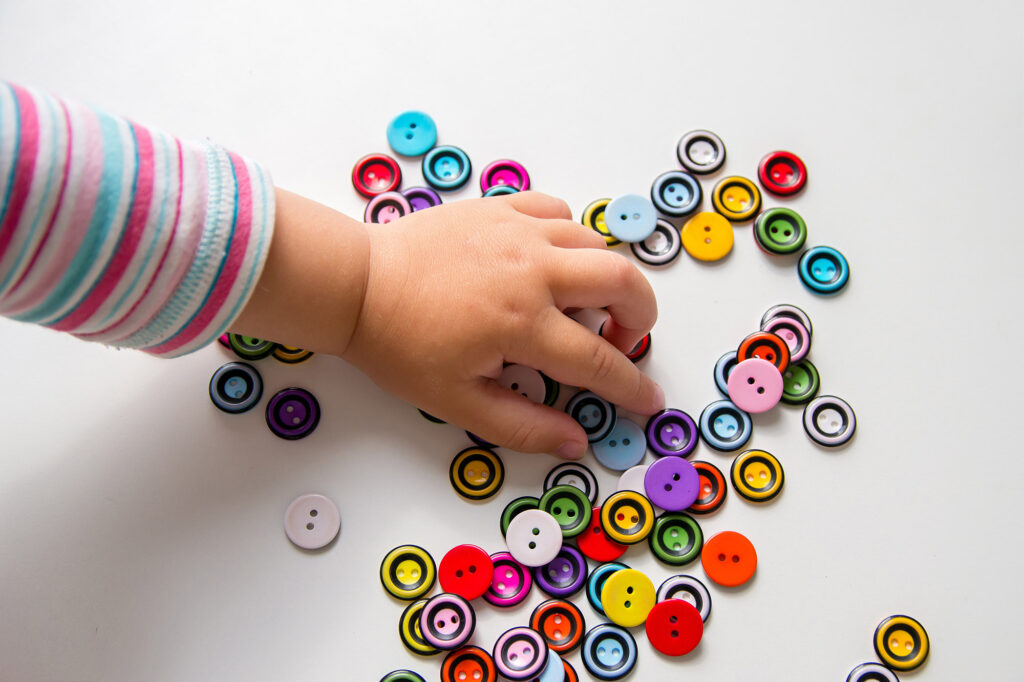There are many parts and pieces that go into the development of fine motor skills. At the core of these skills is the ability to recognize and work off of our midline. Midline is an imaginary division of our body between left and right sides. When we have a strong sense of where our midline is we are able to move our body in all planes around this line. This may be as simple as reaching for a glass of water or balancing on a swing. When we don’t have a strong sense of midline we may look clumsy or weak, have trouble visually tracking or have poor fine motor skills.
As Occupational Therapists work to improve a child’s fine motor and visual motor skills, the first place that we start is midline development. If the trunk of a tree is strong and stable, then the limbs are able to grow and flower. This is also true for children. Midline development happens when a child is able to separate parts of their body in order to engage with their environment. A baby starts this process with reaching for their feet which then progresses to sitting upright and reaching for an object then to crawling and walking. All of these actions take coordination and planning from various parts of our body to make organized movement.
Core stability
- Core stability allows us to coordinate our muscle to reach, rotate, bend and extend to engage with our world. It is the integration of our muscles that makes this happen seamlessly.
- Reaching away from our body requires our core to stabilize our spine, hips, and neck to create a solid base to move from.
- Core stability is required in order for us to move our eyes independently of our body and head. This allows us to walk and enjoy our surroundings without tripping over obstacles in our path.
A few activities to promote core stability
-
- Plank
- Bridge lifts
- Rolling
- Super man
- Crab walking
- Wheelbarrow walking
Shoulder stability
- Shoulder stability allows us to use the parts of our lower arm (forearm rotation, wrist, and fingers) without moving the entire shoulder.
- This allows us to use precise movements with our fingers to draw, write, cut and build.
A few activities to promote shoulder stability
-
- Working on a vertical surface such as an easel to color or draw.
- Laying on tummy propped on elbows to read or complete a puzzle.
- Wheelbarrow walking
Finger Skills
- The ability to manipulate objects with our fingers requires finger isolation.
- Finger isolation requires the ability to separate the two sides of the hand (the pinky side from the thumb side)
- Once we are able to separate the two sides of our hands we can use our fingers to manipulate and reposition objects in our hands (adjusting a crayon in our fingers).
A few activities to promote finger skills
-
- Using tongs to eat with
- Play dough
- Placing small objects into containers
- Putty
- Spray bottles
- Clothes pins
- Tearing paper
If your child is struggling with fine motor skills, take a step back and remember how many pieces go into creating a strong core. It can take a lot of work for these skills to develop but a tree cannot produce leaves without a solid trunk and branches. Try some of these activities and seek an occupational therapist’s help to grow your child’s fine motor skills so they can flower.



